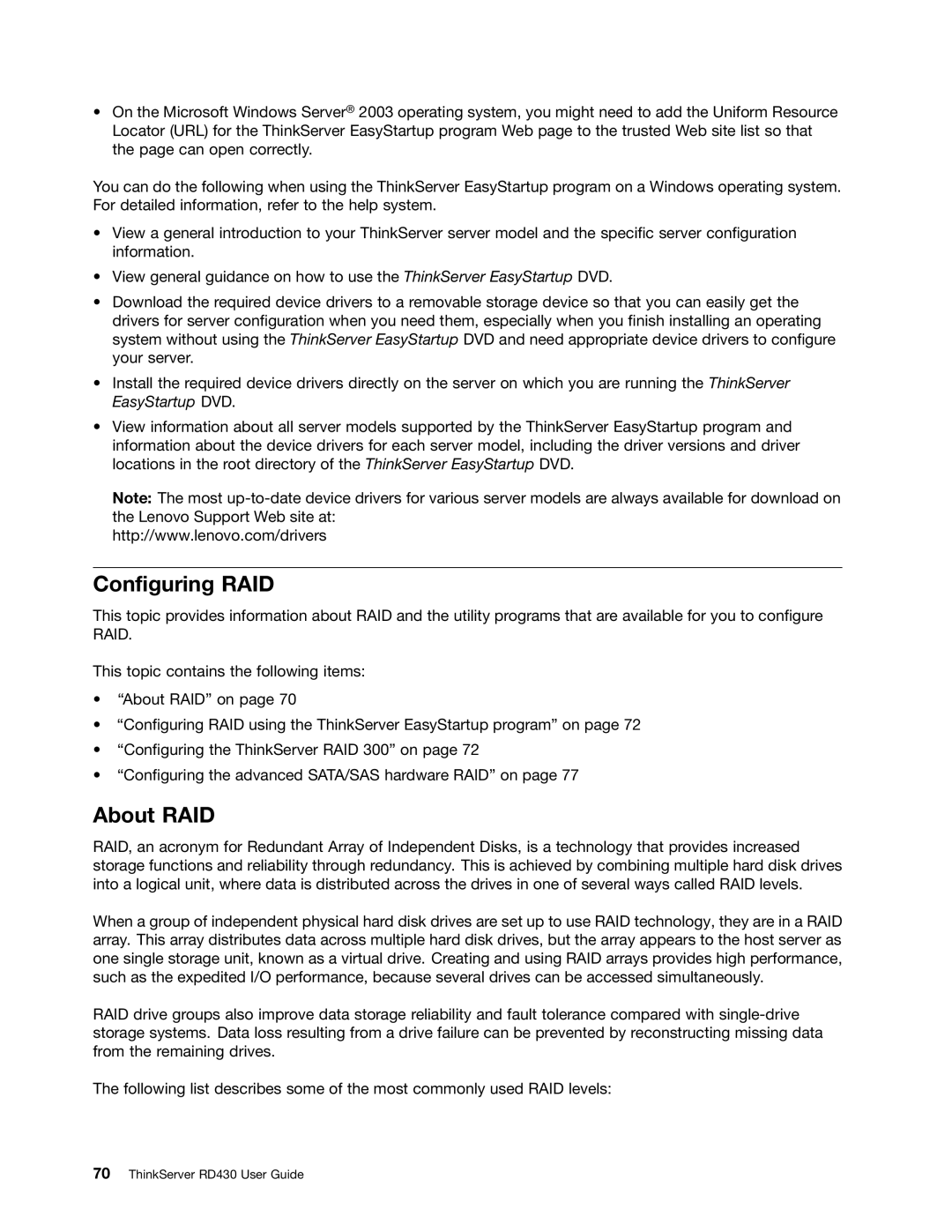•On the Microsoft Windows Server® 2003 operating system, you might need to add the Uniform Resource Locator (URL) for the ThinkServer EasyStartup program Web page to the trusted Web site list so that the page can open correctly.
You can do the following when using the ThinkServer EasyStartup program on a Windows operating system. For detailed information, refer to the help system.
•View a general introduction to your ThinkServer server model and the specific server configuration information.
•View general guidance on how to use the ThinkServer EasyStartup DVD.
•Download the required device drivers to a removable storage device so that you can easily get the drivers for server configuration when you need them, especially when you finish installing an operating system without using the ThinkServer EasyStartup DVD and need appropriate device drivers to configure your server.
•Install the required device drivers directly on the server on which you are running the ThinkServer EasyStartup DVD.
•View information about all server models supported by the ThinkServer EasyStartup program and information about the device drivers for each server model, including the driver versions and driver locations in the root directory of the ThinkServer EasyStartup DVD.
Note: The most
http://www.lenovo.com/drivers
Configuring RAID
This topic provides information about RAID and the utility programs that are available for you to configure RAID.
This topic contains the following items:
•“About RAID” on page 70
•“Configuring RAID using the ThinkServer EasyStartup program” on page 72
•“Configuring the ThinkServer RAID 300” on page 72
•“Configuring the advanced SATA/SAS hardware RAID” on page 77
About RAID
RAID, an acronym for Redundant Array of Independent Disks, is a technology that provides increased storage functions and reliability through redundancy. This is achieved by combining multiple hard disk drives into a logical unit, where data is distributed across the drives in one of several ways called RAID levels.
When a group of independent physical hard disk drives are set up to use RAID technology, they are in a RAID array. This array distributes data across multiple hard disk drives, but the array appears to the host server as one single storage unit, known as a virtual drive. Creating and using RAID arrays provides high performance, such as the expedited I/O performance, because several drives can be accessed simultaneously.
RAID drive groups also improve data storage reliability and fault tolerance compared with
The following list describes some of the most commonly used RAID levels:
